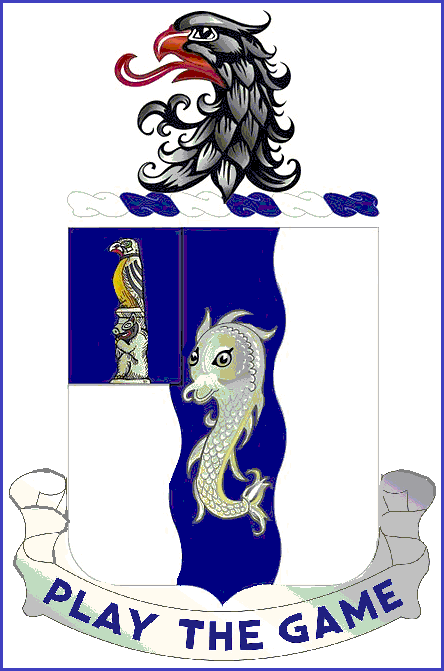

WHAT'S NEW?
1. Co. F (LRP), 50th Inf., 25th ID
2. Co. F, 50th Inf., Danang, USARV
3. Unit Awards & Decorations
4. Vietnam Campaigns
|
|
WHAT'S NEW? |
Company F (LRP), 50th Infantry(20 December 1967 to 1 February 1969)
|
Fox Rangers (Tropical Rangers)
| ||||||||||||||||||
| Training for the new LRRPs was accomplished at the Special
Forces MACV Recondo School at Nha Trang. The unit started patrolling at increasing
distances from the Division and fire support bases. Missions included waterborne
operations and were primarily oriented to finding the enemy so U.S. firepower could be
staged and brought to bear on the enemy. Other types of missions including prisoner
snatch, ambush, etc. were ordered for the normal five man teams. On the job experience added Standard Operating Procedures (SOP) for later volunteers to the unit. The only way into the unit was to volunteer and the members could be reassigned by unvolunteering themselves for less hazardous duty in a rifle unit. Allocations to Nha Trang and length of training time encouraged the formation of a 25th Division Recondo School which quickly brought volunteers to a workable patrol knowledge level. LRRP was eventually given a TO&E personnel strength of 60 plus, but its real strength was closer to half that while its address was D Troop (LRRP), 3rd Squadron, 4th Cavalry. A remarkable amount of useful patrol knowledge was passed on in these classes always bearing the indelible stamp of the original Nha Trang training by the Special Forces. The word "Reconnaissance" is somewhat misleading because missions were often combat in nature stemming from the desire of patrollers and commanders to do more than just look. Missions often were ended with an ambush or were interrupted by targets of opportunity. This was a prevailing attitude in the field and base commanders. While the 25th Division was in Cu Chi, its 3rd Brigade was still in Pleiku with its LRRPs referred to as "Bronco LRRP's". The Brigade LRRP teams existed from mid-1966 to August 1967, participating in 7 major operations from the border west to the South China Sea east including Duc Pho and Qui Nhon. The Department of the Army officially authorized the formation of Company F, 50th Infantry Detachment (LRP) on 20 December 1967. LRP stood for Long Range Patrol which more closely represented the missions. This unit was formed with the personnel and equipment from the LRRP detachment. The combat nature of the unit was borne out when General Weyand said in March 1967 that LRRP was the "fightingest unit under his command". The 50th Infantry continued to operate in III Corp region of Vietnam which included War Zones C and D which contained the floating enemy command for all of Vietnam (COSVN). The 50th Infantry was now known as the Cobra Lightning Patrollers and continued to operate in areas such as Tay Ninh, Fish Hook, Parrots Beak, and Angels Wing along the Cambodian border. Actions initiated on 28 January 1968 by the LRPs resulted in the KIA of 64 Viet-Cong reconnaissance troops. Credit needs to be given to the personnel of the LRRP platoon and the 50th Infantry Detachment (LRP) for establishing the doctrine that would become SOP for Company F (Ranger), 75th Infantry. The 75th Infantry absorbed the personnel and equipment of the 50th Infantry detachment (LRP) on 1 February 1969. They were now known as "Fox Rangers" from the phonetic "F" and "Tropical Rangers" from the Division's name "Tropic Lightning". Rangers included one sniper qualified trooper on each team. Ranger training started in the U.S. and was more refined than ever based on intelligence and experience gathered by Vietnam Ranger parent units (LRRP & LRP). This produced extremely qualified personnel well able and motivated to do the dangerous missions of the Rangers. On 2 April 1970, two ranger teams made contact with entrenched forces of the crack 271st VC Regiment that required 2 American Battalions to deal with (one was mechanized). Rangers mission continued to operate in Hobo & Bo Loi Woods, Nui Ba Den mountain (the only mountain in the area), the Iron Triangle and into Cambodia as the historical predecessors had done since 1966. The "F" Company Rangers were now authorized 123 troopers. In spring 1970, the Rangers participated in the process of Vietnamization which was to allow the South Vietnam more latitude in fighting the war in their country. From August to October 1970 Rangers from "F" Company conducted 85 patrols. In 1971 operations worked to disrupt enemy supplies and Tet 1971 was remarkably free from enemy activity. "F" Company, 75th Rangers was deactivated 15 March 1971. For additional history, please visit the F Co, 50th (Inf) LRP, F/75 (Inf) Ranger Website. | ||||||||||||||||
| ||||||||||||||||